Nurturing Authentic Indigenous Voices in Indigenous Children’s and Young Adult Literature: An Aotearoa New Zealand Case Study
by Nicola Daly, Julie Barbour, Darryn Joseph, Te Kani Price, Pania Tahau-Hodges, Kawata Teepa, Nic Vanderschantz, Eboni Waitere, and Bryony Walker
Introduction and Literature Review
At the heart of decision-making in children’s literature is the publisher who decides whose stories are told and how (Enciso et al., 2010). There is some research on inclusivity practices in the children’s literature that we see in libraries, homes, and publishing houses (Caple & Tian, 2022; Daly, Vanderschantz, Mitchell, & Blair, 2025; Daly, 2021; Stagg Peterson & Robinson, 2020). International research shows that there is limited cultural and linguistic diversity evident in children’s picturebooks (Ka’ai-Mahuta, 2011; Centre for Literacy in Primary Education, 2022; Wissman, 2019). This lack of diversity has implications for literacy engagement and the perpetuation of social inequality (Caple & Tian, 2022; Adam, 2021; Tschida, Ryan, & Ticknor, 2014; Wissman, 2019).
There is, however, little work examining how the publishing process can contribute to increased diversity in children’s picturebooks, particularly in relation to Indigenous languages and cultures. The importance of this is stated eloquently by Canadian researchers of Indigenous children’s literature, Hanson, Kind, Phipps, and Spring (2020, p. 84) who explain that “[c]hildren’s literature with a positive representation of Indigenous communities allows for hope and affirmation. Through a creative representation of traditions that are still alive today, these stories affirm identity that is strengthened by connections to the past while providing hope for the future.”
There are few Indigenous publishers of children’s literature around the world, and very limited research examining the publishing process in Indigenous contexts. Moreover, there is no empirical research to date exploring Indigenous publishing processes that ensure the representation of Indigenous language, culture, and identities in children’s literature (Bradford, 2007; Sheehan-Bright, 2011; Stagg Peterson & Robinson, 2020). In this article, we hope to contribute to a deeper understanding of Indigenous Children’s and Young Adult Literature (ICYAL) by sharing details and preliminary findings of our three-year New Zealand Royal Society, Marsden-funded research project. In this research and through a close collaboration with Huia Publishers, a multi-award-winning Indigenous publisher based in Pōneke (Wellington), New Zealand, we explore the ways in which Indigenous voices are and can be authentically represented in picturebooks.
 Nicola Daly is a sociolinguist and associate professor in the Division of Education at the University of Waikato, where she teaches children’s literature. She is the principal investigator of a three-year Marsden funded project, working with Huia Publishers and other colleagues to explore Indigenous voices in picturebooks. She leads the Postgraduate Certificate in Children’s and Young Adult Literature and co-directs the Waikato Picturebook Research Unit. She was a Fulbright New Zealand Scholar at the University of Arizona in 2019-20.
Nicola Daly is a sociolinguist and associate professor in the Division of Education at the University of Waikato, where she teaches children’s literature. She is the principal investigator of a three-year Marsden funded project, working with Huia Publishers and other colleagues to explore Indigenous voices in picturebooks. She leads the Postgraduate Certificate in Children’s and Young Adult Literature and co-directs the Waikato Picturebook Research Unit. She was a Fulbright New Zealand Scholar at the University of Arizona in 2019-20.
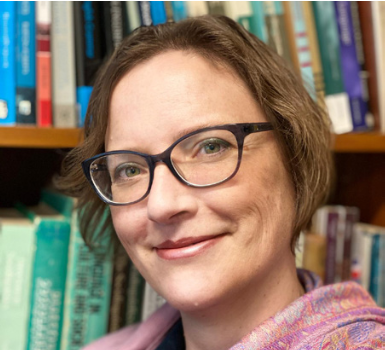 Julie Barbour is a senior lecturer in Linguistics at Te Whare Wānanga o Waikato, the University of Waikato in Kirikiriroa, Hamilton. Julie specializes in the documentation and analysis of Indigenous Pacific languages, particularly the languages of Malekula Island in Vanuatu. While primarily a grammarian, Julie also works in the areas of social/anthropological, historical, and educational linguistics. She is an advocate for Indigenous languages, with a strong interest in the role of children’s literature in language reclamation and revitalization initiatives.
Julie Barbour is a senior lecturer in Linguistics at Te Whare Wānanga o Waikato, the University of Waikato in Kirikiriroa, Hamilton. Julie specializes in the documentation and analysis of Indigenous Pacific languages, particularly the languages of Malekula Island in Vanuatu. While primarily a grammarian, Julie also works in the areas of social/anthropological, historical, and educational linguistics. She is an advocate for Indigenous languages, with a strong interest in the role of children’s literature in language reclamation and revitalization initiatives.
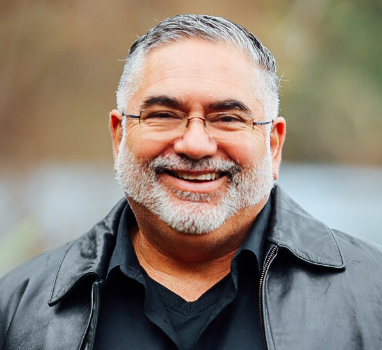 Dr. Darryn Joseph, from the Ngāti Maniapoto and Ngāti Rereahu tribes, is an award-winning children’s writer and translator, and resides in the North Island of Aotearoa, New Zealand. He sits on the book council board, Read NZ Te Pou Muramura, to encourage all New Zealanders to read more. He is currently working with colleagues from the University of Waikato on picture book research.
Dr. Darryn Joseph, from the Ngāti Maniapoto and Ngāti Rereahu tribes, is an award-winning children’s writer and translator, and resides in the North Island of Aotearoa, New Zealand. He sits on the book council board, Read NZ Te Pou Muramura, to encourage all New Zealanders to read more. He is currently working with colleagues from the University of Waikato on picture book research.
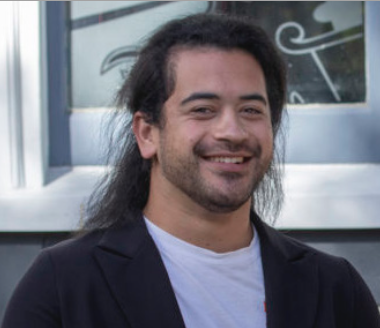 Te Kani Price designer and programme manager, Ngāti Tūwharetoa, Te Whakatōhea, is an award-winning graphic designer and creative director. His practice covers the broad spectrum of genres and media that HUIA produces, with particular interest in the pairing of text and image to tell a nuanced story. He has worked across multiple design disciplines in Aotearoa and Australia. Te Kani works alongside clients directly to develop stories that engage audiences in both general and culturally specific contexts.
Te Kani Price designer and programme manager, Ngāti Tūwharetoa, Te Whakatōhea, is an award-winning graphic designer and creative director. His practice covers the broad spectrum of genres and media that HUIA produces, with particular interest in the pairing of text and image to tell a nuanced story. He has worked across multiple design disciplines in Aotearoa and Australia. Te Kani works alongside clients directly to develop stories that engage audiences in both general and culturally specific contexts.
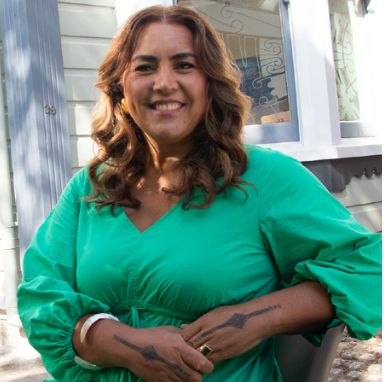 Pania Tahau-Hodges (Ngāti Tūwharetoa, Ngāi Tūhoe) is a director of Huia Publishers, an award-winning Māori-owned publishing house in Aotearoa, New Zealand. Her work as both publisher and author centers on amplifying Indigenous voices in children’s literature and supporting diverse, culturally grounded narratives. Her publications ensure that Māori children and whānau see their language, culture, and world reflected in stories, while her publishing leadership advances Indigenous storytelling within national and international contexts. She is particularly interested in the role of children’s literature in cultural revitalization, representation, and education.
Pania Tahau-Hodges (Ngāti Tūwharetoa, Ngāi Tūhoe) is a director of Huia Publishers, an award-winning Māori-owned publishing house in Aotearoa, New Zealand. Her work as both publisher and author centers on amplifying Indigenous voices in children’s literature and supporting diverse, culturally grounded narratives. Her publications ensure that Māori children and whānau see their language, culture, and world reflected in stories, while her publishing leadership advances Indigenous storytelling within national and international contexts. She is particularly interested in the role of children’s literature in cultural revitalization, representation, and education.
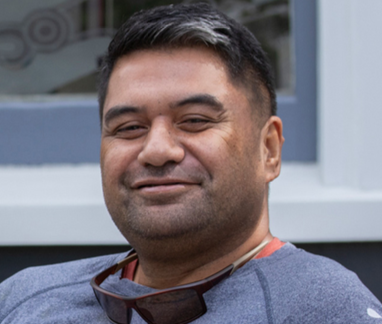 Kawata Teepa (Ngāi Tūhoe, Te Whakatōhea) is an award-winning author, translator, and content developer and is the Pou Tikanga (Lead Cultural Advisor) at Huia Publishers. Kawata works on conceptualizing projects, translating picture books, providing cultural guidance on print and digital projects, developing educational resources, and more. Kawata brings to his work a passion for imparting his knowledge to the younger generations of tamariki (children).
Kawata Teepa (Ngāi Tūhoe, Te Whakatōhea) is an award-winning author, translator, and content developer and is the Pou Tikanga (Lead Cultural Advisor) at Huia Publishers. Kawata works on conceptualizing projects, translating picture books, providing cultural guidance on print and digital projects, developing educational resources, and more. Kawata brings to his work a passion for imparting his knowledge to the younger generations of tamariki (children).
 Dr. Nicholas (Nic) Vanderschantz is a senior lecturer at Te Whare Wānanga o Waikato investigating the design of human-centered solutions to information-seeking and information-use problems. He has investigated individual and collaborative use of pBooks, eBooks, picturebooks, libraries, mobile and desktop apps, and the Internet. Nic’s research focuses on the presentation and visualisation of information using typography in single language and bilingual contexts.
Dr. Nicholas (Nic) Vanderschantz is a senior lecturer at Te Whare Wānanga o Waikato investigating the design of human-centered solutions to information-seeking and information-use problems. He has investigated individual and collaborative use of pBooks, eBooks, picturebooks, libraries, mobile and desktop apps, and the Internet. Nic’s research focuses on the presentation and visualisation of information using typography in single language and bilingual contexts.
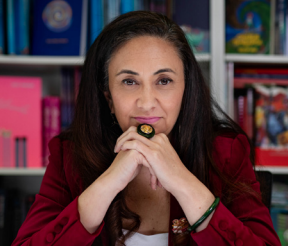 Eboni Waitere (Ngāti Kahungunu, Rangitāne) is a director of Huia Publishers, a pioneering Indigenous publishing house based in Aotearoa New Zealand. She is also the president of the Publishers’ Association of New Zealand, Te Rau o Tākupu (PANZ). With a background deeply rooted in her Indigenous heritage, Eboni approaches her role as a publisher with a quiet determination to amplify Indigenous voices and narratives.
Eboni Waitere (Ngāti Kahungunu, Rangitāne) is a director of Huia Publishers, a pioneering Indigenous publishing house based in Aotearoa New Zealand. She is also the president of the Publishers’ Association of New Zealand, Te Rau o Tākupu (PANZ). With a background deeply rooted in her Indigenous heritage, Eboni approaches her role as a publisher with a quiet determination to amplify Indigenous voices and narratives.
 Bryony Walker is an English-language editor at Huia Publishers and works on commercial books across all genres.
Bryony Walker is an English-language editor at Huia Publishers and works on commercial books across all genres.